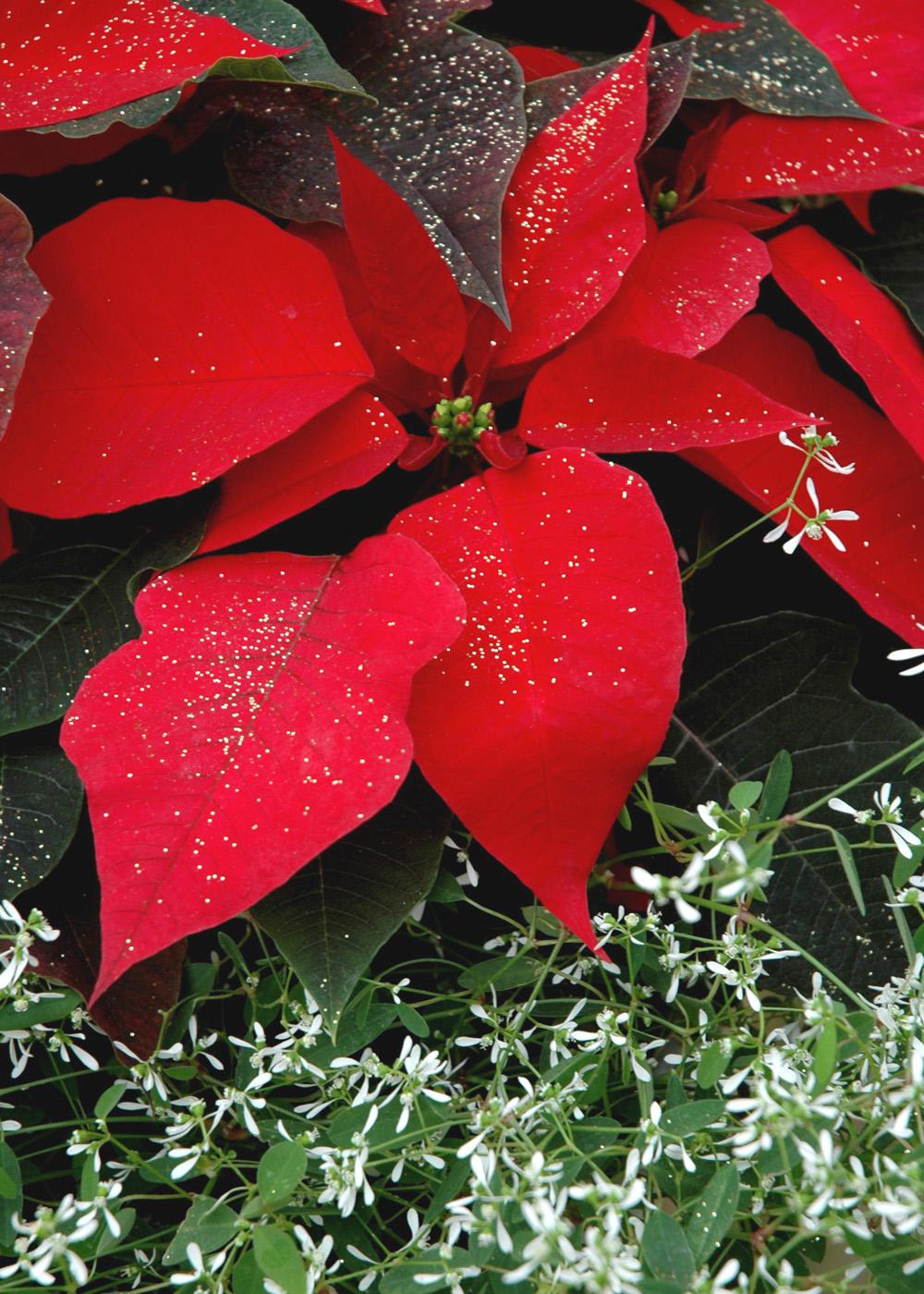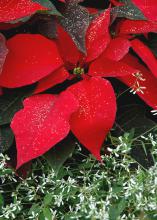Information Possibly Outdated
The information presented on this page was originally released on November 21, 2006. It may not be outdated, but please search our site for more current information. If you plan to quote or reference this information in a publication, please check with the Extension specialist or author before proceeding.
State producers offer colorful poinsettias
By Norman Winter
MSU Horticulturist
Central Mississippi Research & Extension Center
This year's poinsettia crop is without a doubt the best I have ever seen, and as usual, our growers are on top of the curve in quality, variety and innovation.
In late summer, I told many of you via television and newspaper articles about the hot new Diamond Frost euphorbia. This is a tough-as-nails plant that produces hundreds of tiny flowers and is related to the poinsettia.
It was one of the big sellers at the Fall Flower and Garden Fest in October. In addition to being a great landscape plant, we knew our growers would use it at Christmas in partnership with poinsettias. The results are quite impressive.
One grower we taped recently was using one of the hot new varieties of red poinsettias called Prestige Scarlet. These were placed in mixed containers with the white-flowered Diamond Frost, giving the impression of the red poinsettia sitting on a bed of new-fallen snow.
The Diamond Frost combination is well suited to every color of poinsettia on the market, including the new painted poinsettias. You'll find these in shades guaranteed to perfectly fit your home's color scheme.
The colorful parts of a poinsettia are actually modified leaves known as bracts. The true flowers are the small, yellow buttons in the centers of the bracts. One popular variety of poinsettia is the Sonora Jingle Bells that have dark red bracts with white flecks, giving it a peppermint look.
My personal favorite has been Pepride with dark green leaves and deep red bracts that are shaped like oak leaves. Prestige Scarlet, which came out last year and I noted above, is quickly climbing to the top of my list.
Enduring Pink is new this year and is a bright almost hot pink variety that is sure to be a hit. Look also for the new Punch series that comes in five different colors. My favorite is the Cranberry Punch.
The Winter Rose series, which is compact and has double rose-formed blossoms, is available in six colors including a Winter Rose Jingle Bells.
No matter whether you choose traditional poinsettias, those grown with Diamond Frost or the trendy, painted selections, transport them carefully. Strong winds or short-term exposure to temperatures below 40 degrees can permanently damage the plants. Use plant sleeves or large shopping bags for added protection in cold weather.
During the holidays, use the poinsettia for decoration. When possible, place the plant in the sunniest location in your home. A window that faces south, east or west is better than one facing north. Don't let the bracts touch the cold windowpanes, since freezing outdoor temperatures can cause damage.
Your poinsettia was greenhouse-grown at day temperatures of 70 to 72 degrees and night temperatures of about 60 degrees. Your plant will last longer if you provide a similar environment at home.
Two problems most often encountered with poinsettias involve watering. It can be disastrous if you forget to water a poinsettia. Examine the soil daily. When the surface is dry to the touch, water until it runs freely out the drainage hole in the container. The second problem results from decorative wraps that trap water and suffocate roots. Be sure to pour out any excess water that pools in the wrap.
Shopping for poinsettias this year will be more fun than ever. You'll want to get several for the various rooms in your home and as gifts for your friends and family.










